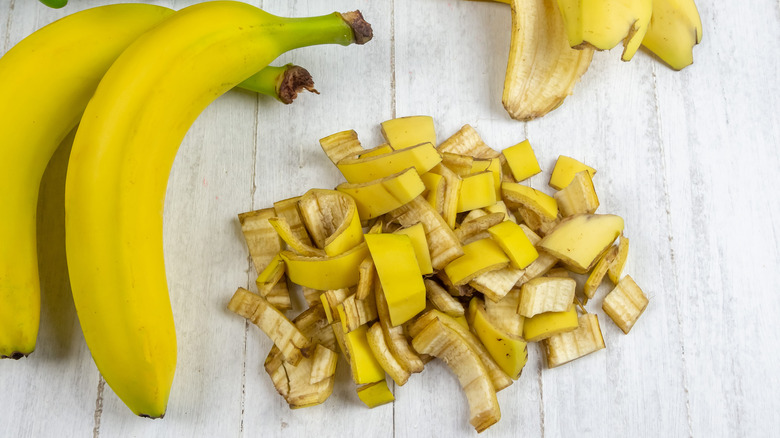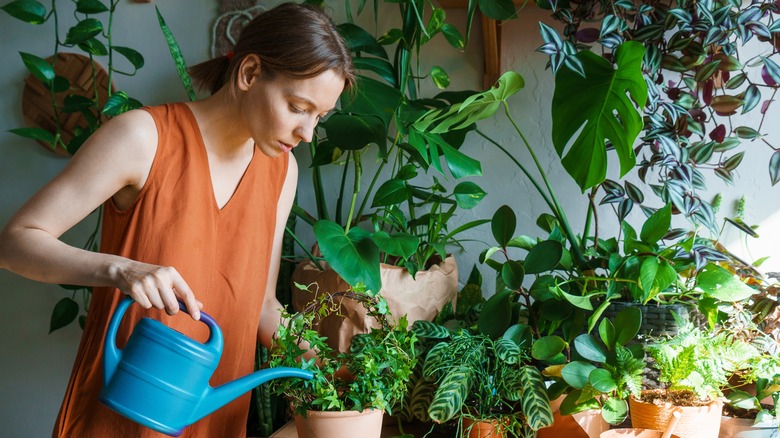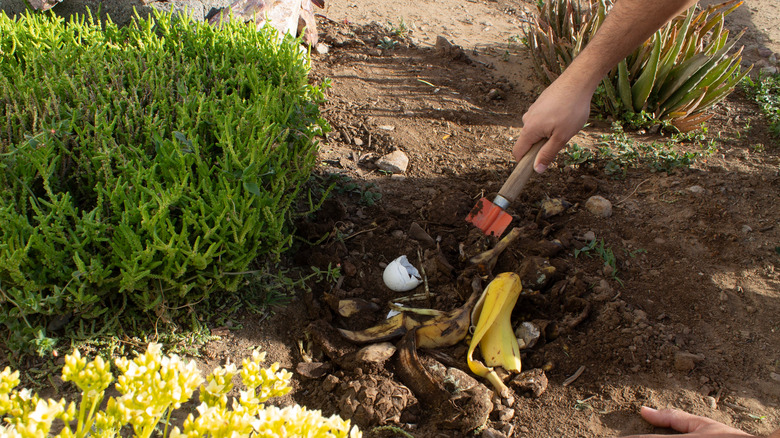Should Gardeners Really Try TikTok's Banana Peel Water Hack?
If you have an issue, there's a TikTok user ready with an answer. For those of us without a green thumb, keeping our plants alive can be a Herculean task. Bringing a new plant home with all the hopes of it growing and staying healthy, only to have the precious flora wither away, is sadly an all-too-familiar situation for the amateur gardener. So when we hear of an easy hack for giving our plants a nutritional boost, it sounds too good to be true.
The viral banana peel water trend consists of soaking banana peels in a jar with water and using that water to fertilize your plants. User @creative_explained energetically states that nutrients such as potassium, phosphorus, calcium, and magnesium get released into the water as the peels soak. Bananas can be found on tables all over, but can the simple yellow fruit naturally enrich our plants?
While many have jumped on board the trend over on TikTok, some are questioning whether the yellow-tinged water actually works or, worse yet, whether it could even be harmful to our precious greenery.
What banana water does to plants
According to the experts at All About Gardening, there are a few issues with this natural fertilizer method. The first is the question of whether any of these nutrients get transferred into the homemade water solution at all. Plant parents hopping on board the trend soak their peels anywhere from overnight to over a week. Generally, this is not enough time for the nutrients to get absorbed into the water. And even if they do get absorbed, that doesn't mean that they're bioavailable to plants, cautions The Spruce: Most plants can only absorb nutrients that have been broken down by microorganisms first.
Besides not being as effective as it claims, there can also be drawbacks to using banana peel water on your plants. The sickly sweet fragrance can attract pests. At the same time, The Spruce warns that this method may even expose your plants to pesticides that were used to grow the bananas.
When it comes to plant care, staying away from harmful chemicals and choosing natural solutions is achievable. If you're going to take this approach, though, it's important to make sure that your natural fertilizer method provides a complete source of nutrients. Banana peel water isn't proven to contain all the compounds a plant relies on, let alone in balanced and consistent quantities; even if the potassium could be absorbed properly, your plants would still be missing vital elements like nitrogen. In fact, relying on the banana peel water alone could actually lead to nutrient deficiency (via Better Homes & Gardens).
Don't throw away your banana peels
While creating a water mixture out of old peels might not be the most effective way to fertilize plants, hold onto your bananas. The yellow fruit is still a valuable natural resource for gardeners. Keep the peels, but instead of soaking them in a jar, bury them. Rose bushes in particular thrive on potassium, so burying peels in the soil next to the bushes allows the peels to compost and the bushes to get a potassium boost (via Farmers' Almanac).
Better yet, keep your other scraps, too. Alongside banana peels, the Farmer's Almanac recommends composting kitchen scraps, egg shells, and coffee grounds. For a more well-rounded and deeper boost, combine your banana peels with other scraps to keep your plants thriving.
If this sounds like something only those with sprawling grounds can do, city-dwelling gardeners shouldn't dismay. Composting is achievable anywhere; you can even compost in an apartment.


